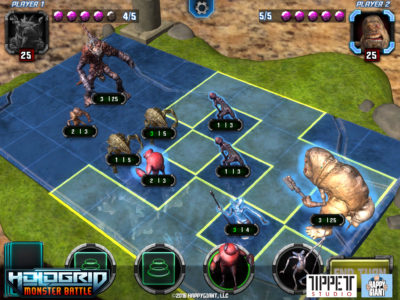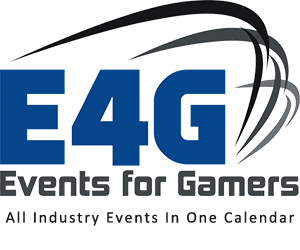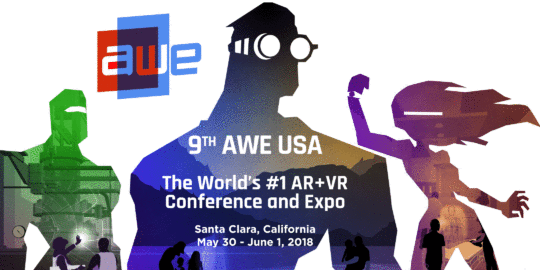Augmented World Expo 2018 (AWE 2018) is returning to Silicon Valley, perhaps one might say in triumphant fashion. By some estimates, Augmented Reality (AR) is clearly in the driver’s seat of the fast-growing mixed-reality sector, and AWE is one of the few events with a clear focus on AR.
Specifically, gaming in AR is what Michael Levine, Founder and Creative Director of HappyGiant, will be talking about at AWE 2018. HappyGiant is the developer behind the mixed-reality title HoloGrid: Monster Battle. We engaged with Michael via an email Q&A about the state of AR and gaming and his upcoming talk about that hot topic.
Events for Gamers (E4G): What first attracted you to develop an augmented reality game? Was it the game concepts or the technology, or both aspects in equal measure?
Michael Levine: For us, we have to go back now about 3 years, so while it was the “medium” of AR in general that attracted us, the specifics of the tech have changed several times, and keep changing. Overall we were and are very attracted to AR gaming and entertainment as it represents a quantum shift in how we think of tech and the world around us, and thus will spawn exciting new forms of gameplay.

E4G: At AWE 2018, you’ll be discussing the augmented reality industry in gaming, in general. What learnings do you plan to highlight?
Michael: For some insight into my thinking, check out my new blog here. I will talk about some of our experiences and talk about the state of AR overall.
E4G: Mobile augmented reality seems to command the lion’s share of the attention recently, but do you think desktop AR in gaming offers as much potential?
Michael: Not really (: Not everyone has webcams for starters. And webcams on desktop PCs are not really conducive to point at much other than your face. Are you talking about something else?
E4G: Knowing what you do now about developing and marketing augmented reality and mobile games, what would HappyGiant do differently in developing “HoloGrid: Monster Battle AR”?
Michael: Well, it depends which version you are referring to. For the AR Kit version and an AR board game in general, it requires a longer session of gameplay. We tried to make HoloGrid as fast paced as we could, as with Mobile AR its hard to hold up your device for lengths of time. With new games we are developing, we are working on shorter sessions, and find portrait view is much more comfortable for mobile AR.

E4G: The augmented reality business seems to have inherited the heat of the hype cycle from virtual reality. Do you think the business will also be prone to the “trough of disillusionment” that the VR space has been working through?
Michael:: It’s already happening. I could argue its worse in AR. In VR, we see titles like Beat Saber pre-sell 50,000 units. That’s not happening in AR. In VR you have people who bought new hardware with a dedicated marketplace looking for titles to try out their new devices. With AR, you are in an already overcrowded app store, fighting for visibility with limited device penetration and with people not actively seeking out AR or even knowing their device is capable of it in many instances.
E4G: What aspects of AR for gaming are different from the augmented reality space as a whole?
Michael: If you are doing it right, almost everything is different. As I alluded to above, we see AR as a fundamental paradigm shift in how we interact with technology, and the world around us. Compare it to VR, where you are putting people in 3D worlds. We have been doing this in games for over 20 years. VR is amazing, but it’s just a new way to experience those 3D worlds and move around them. By comparison, AR requires new thinking. As someone said on Twitter recently “If VR devs hate not controlling the camera in VR, wait until they try AR and can’t control the set!”. We are now making experiences for people and we do not know where they will be when they try them. This has never been done in a sense. Then using that world around them, whether its spatial data, GPS or other things, takes on new forms of gameplay and experiences.
E4G: What do you think AR experiences in gaming might look and feel like by 2020?
Michael: By 2020 the first good consumer level AR headsets should be coming out from Apple, Magic Leap and others. This is when things are going to get interesting, and even more fun. At first it will be a step back in terms of market share. We will be like VR now with a small user base. But to companies who get in early, this will be the beginning of the real AR revolution. Once our hands are free and we have true spatial computing, an AR cloud, multiplayer … it’s going to be fun.
E4G: What else do you look forward to checking out at AWE 2018?
Michael: Anything related to gaming or entertainment. But also all of the AR cloud companies and their demos. Anything in the Playground. The fun stuff and things we can use going forward now, not in a few years.
Thanks to Michael Levine for taking the time to share his thoughts ahead of his AWE 2018 talk. Speaking of that, here’s the link to the “State of AR Gaming” at AWE 2018, if you plan to attend and want to know more.



